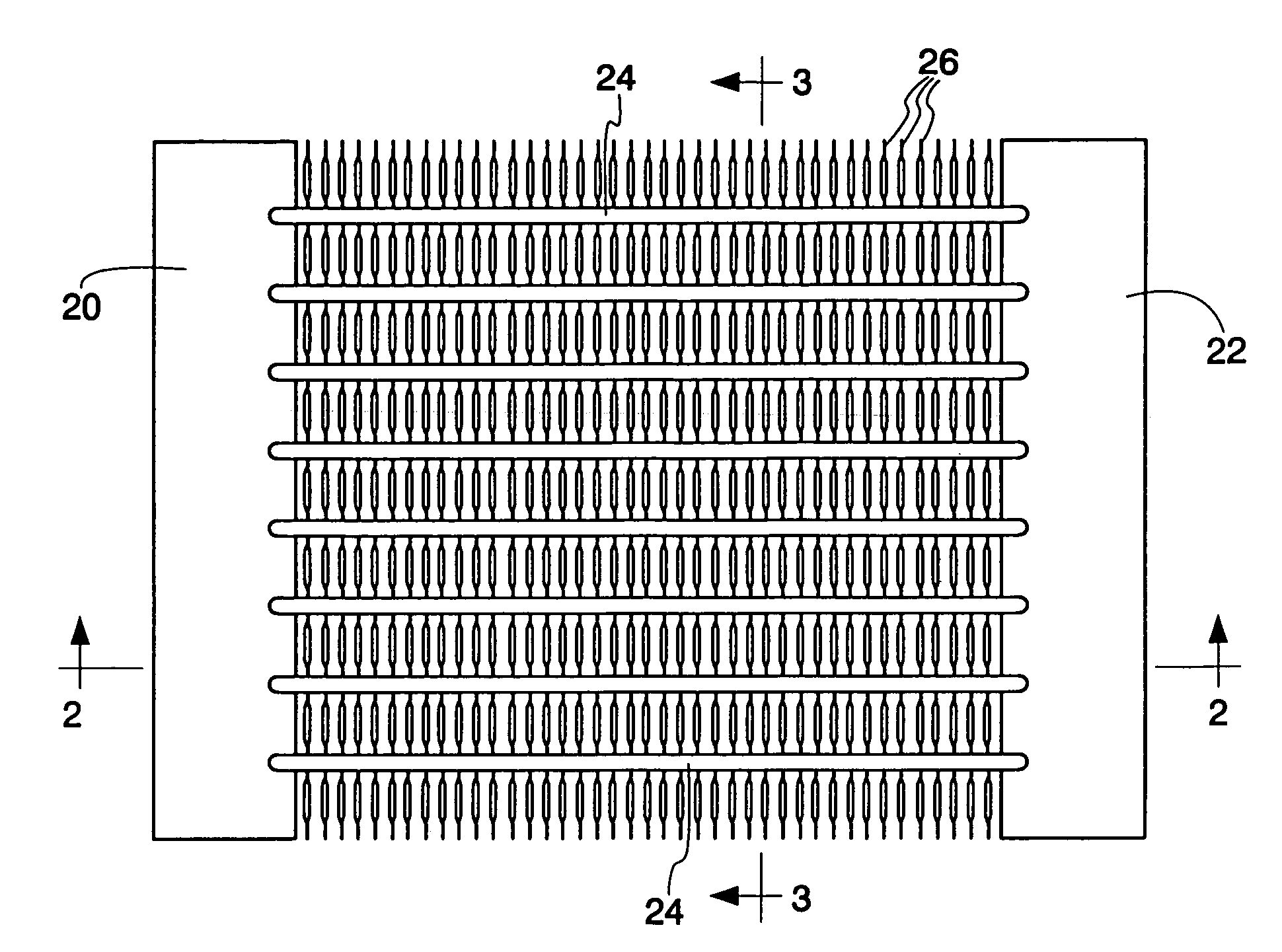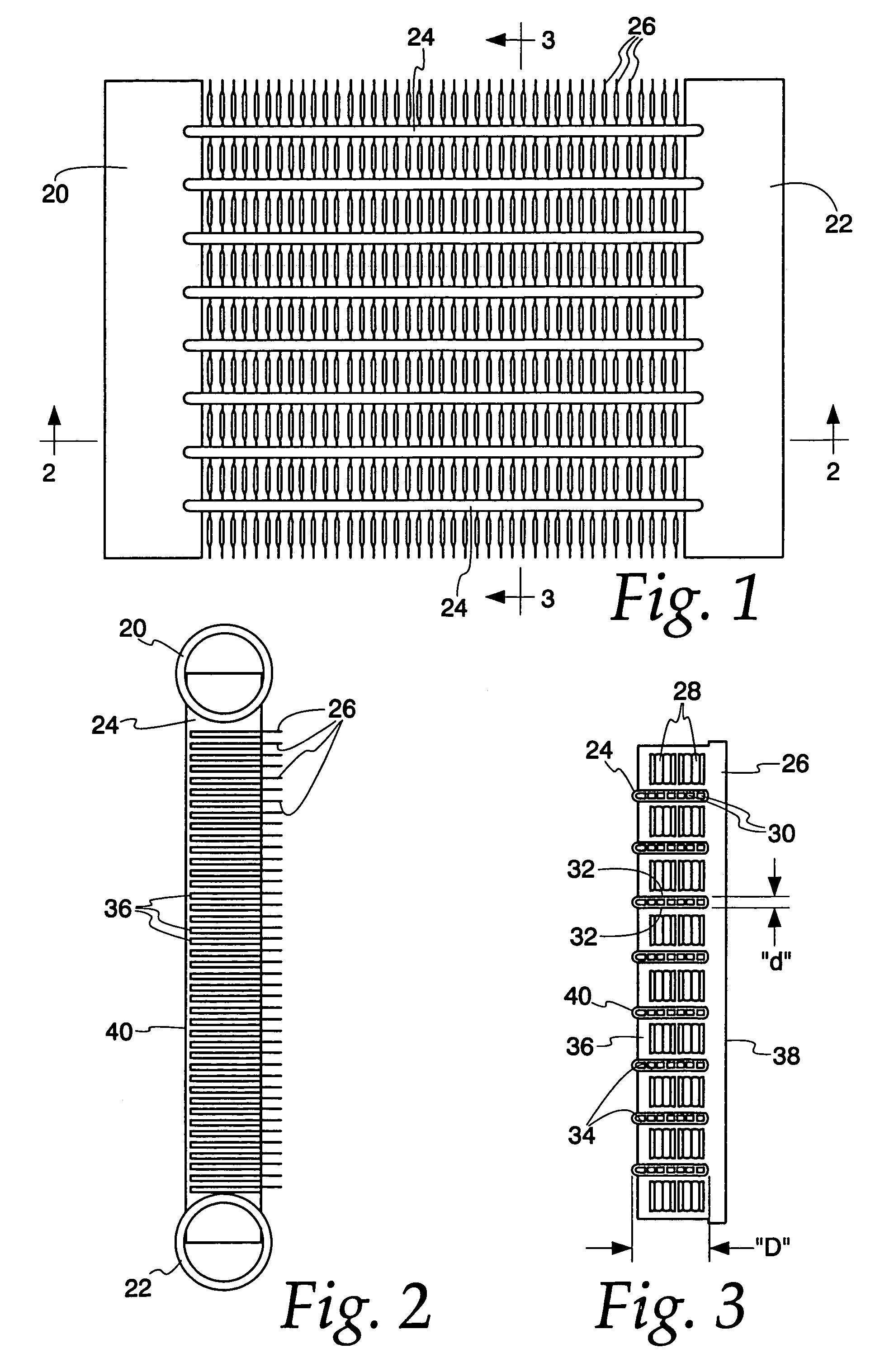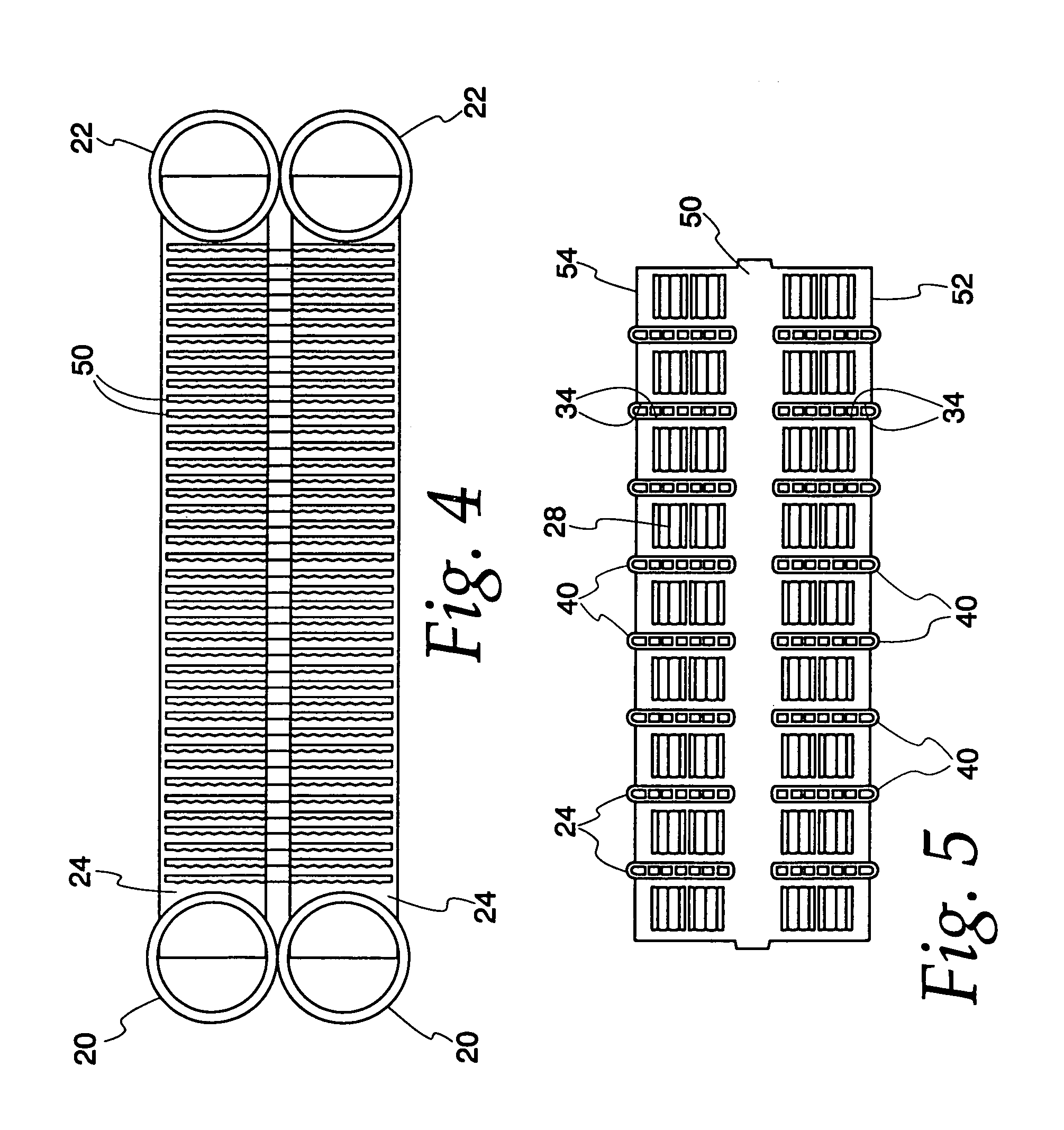Heat exchanger
a technology of heat exchangers and heat exchangers, which is applied in the direction of manufacturing tools, soldering devices, lighting and heating apparatus, etc., can solve the problems of water drainage, drastically impede efficiency, and suffer the performance of round tube plate fin heat exchangers, so as to eliminate the requirement of fixation
- Summary
- Abstract
- Description
- Claims
- Application Information
AI Technical Summary
Benefits of technology
Problems solved by technology
Method used
Image
Examples
Embodiment Construction
[0044]Exemplary embodiments of the invention will be described in connection with the drawings, frequently in the context of heat exchangers having horizontal tube runs and vertically extending plate fins. However, it is to be understood that no restriction to such orientation is intended except insofar as expressed in the claims. Similarly, while it is preferable that the components of the heat exchanger be of aluminum or aluminum alloy, various performance enhancing features of the invention, such as the use of arcuate plate fins, and / or the use of plate fins which are slotted and open to one side of the fin may be employed with efficacy in non-aluminum heat exchangers; and again, no restriction to aluminum heat exchangers is intended except insofar as expressed in the appended claims.
[0045]A first embodiment of a heat exchanger made according to the invention is illustrated in FIGS. 1–3 and is seen to include a pair of vertically extending headers, 20, 22 that are parallel and sp...
PUM
| Property | Measurement | Unit |
|---|---|---|
| angle | aaaaa | aaaaa |
| dimension | aaaaa | aaaaa |
| width | aaaaa | aaaaa |
Abstract
Description
Claims
Application Information
 Login to View More
Login to View More - R&D
- Intellectual Property
- Life Sciences
- Materials
- Tech Scout
- Unparalleled Data Quality
- Higher Quality Content
- 60% Fewer Hallucinations
Browse by: Latest US Patents, China's latest patents, Technical Efficacy Thesaurus, Application Domain, Technology Topic, Popular Technical Reports.
© 2025 PatSnap. All rights reserved.Legal|Privacy policy|Modern Slavery Act Transparency Statement|Sitemap|About US| Contact US: help@patsnap.com



